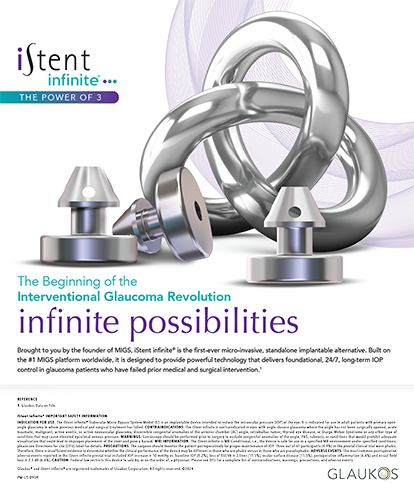Posterior capsular opacification (PCO) is still the leading complication of cataract surgery. We can reduce the incidence of secondary cataracts and the need for YAG capsulotomies by properly sizing the capsulorhexis, meticulously cleaning cortex from the capsule, and implanting IOLs that resist PCO. New data show that square-edged IOLs slow the formation of PCO but that the effect wears off over time.1 This result is not surprising, however, considering that the cells responsible for PCO are epithelial in nature and designed to be resilient.
PCO is particularly problematic in developing countries because manual extracapsular surgery—the primary method of cataract extraction in these areas—does not provide the same resistance to secondary cataract as small-incision phacoemulsification. We must remain cognizant that the impairment of vision due to PCO in these cases can be nearly as severe as the primary cataract—and far more difficult to find with a simple penlight screening.
What phaco technique has most improved cataract surgery in the past decade?
Micropulse/hyperpulse phacoemulsification significantly reduced the amount of power we need to remove cataracts. This modality decreases turbulence, improves followability, and lowers the incidence of wound burn and corneal edema. In my experience, micropulse/hyperpulse phacoemulsification has significantly reduced the complications of routine surgery and eased the complexity of challenging procedures. The realization that we could improve the efficiency of phacoemulsification freed us to develop more innovative approaches to cataract surgery and ultimately lay the groundwork for torsional and transversal technologies.
What is the current focus of your research?
I am using the Surgical Media Center from Abbott Medical Optics Inc. to evaluate the efficacy of intracameral mydriatic agents. This system allows me to superimpose a ruler over any surgical video and measure the size of a patient's pupil during every stage of the procedure.
As we all know, the widespread use of Flomax for benign prostatic hyperplasia puts many patients at risk for intraoperative floppy iris syndrome. Traditionally, we dilate the pupil with topical drops. If the first dose does not work, we administer more until we have achieved a satisfactory working aperture. Because intracameral dilation delivers the mydriatic agent directly to the iris, it works almost instantly. I am trying various agents to identify a concentration that provides adequate dilation for every case. So far, I have not discovered a "Flomax-proof" regimen, and I suspect that the optimum regimen will probably combine preoperative eye drops with intracameral dilation, as reported by Myers and Shugar.2
How does intracameral dilation change cataract surgery?
Preoperative preparation becomes simpler because it requires less nursing time and fewer topical drops. From a practical standpoint, some alterations in the order of steps in the case become important. I would normally make the primary incision while the globe is relatively firm and then create the sideport incision. With intracameral dilation, I create the sideport first to facilitate the injection of the anesthetic and the mydriatic agent into the anterior chamber. One trick is to keep the globe inflated to create proper wound architecture. By the time I make the primary incision and fill the anterior chamber with viscoelastic (approximately 45 to 60 seconds after the intracameral injection), the pupil is adequately dilated, and I can perform the rest of the procedure.
Do you have any family traditions?
We love to hop in the car for a week and go hiking in a fantastic place—Yosemite, Yellowstone, Colorado. Because we do not get much one-on-one time with our children on these trips, my wife and I take whichever of our children is 13 years old at the time to the ESCRS meeting. My oldest son accompanied us to Paris, my middle son visited London, and one of my daughters just explored Barcelona. My younger daughter looks forward to discovering Vienna. I truly appreciate the opportunity to explore new countries with my family while I learn about the latest developments in my field.


